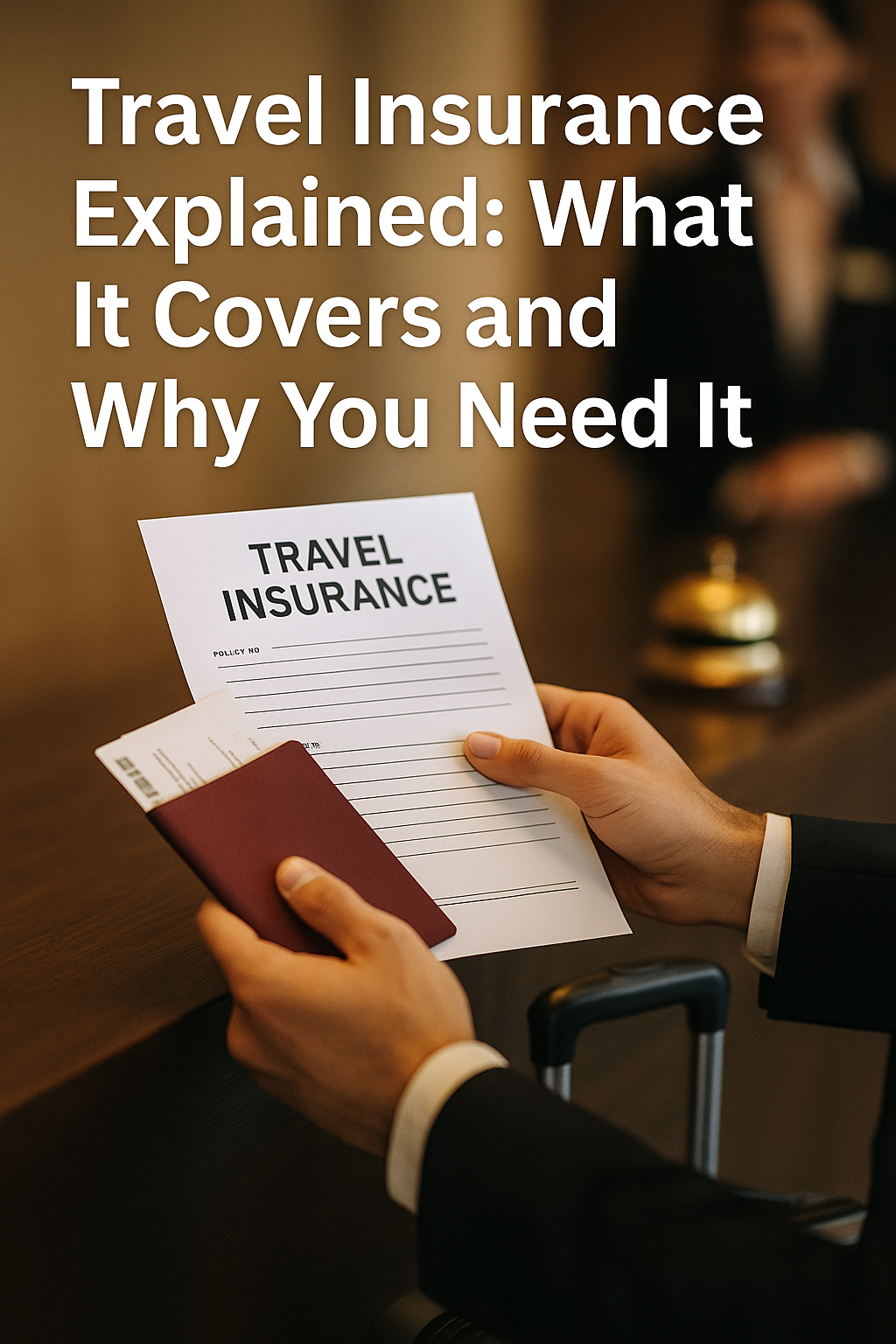When planning a trip, travel insurance is often overlooked in favor of flights, hotels, and attractions. However, this small investment can save you thousands of dollars and a lot of stress when things go wrong. From lost luggage to medical emergencies, travel insurance provides crucial protection. In this guide, we’ll break down what travel insurance covers, what it doesn’t, and why it should be a non-negotiable part of your travel checklist.
What Is Travel Insurance?
Travel insurance is a policy that offers financial protection and support services for a variety of unforeseen travel-related issues. It typically covers you before and during your trip, and sometimes even after returning home, depending on the plan.
There are many types of travel insurance, but most plans fall into two main categories:
- Single-trip insurance: Covers one trip for a specified time.
- Annual/multi-trip insurance: Covers multiple trips within a year, ideal for frequent travelers.
What Does Travel Insurance Cover?
While policies vary by provider, most comprehensive plans cover the following core areas:
1. Trip Cancellation or Interruption
Reimburses you for non-refundable expenses if you have to cancel or cut your trip short due to:
- Illness, injury, or death (you or a close relative)
- Natural disasters
- Job loss
- Travel bans or strikes
Example:
If you have to cancel your $2,000 vacation due to an emergency, you can recover the prepaid costs through your policy.
2. Medical Emergencies and Evacuation
Covers expenses related to accidents, illnesses, and sometimes dental issues while abroad, including hospital stays, treatments, and medical evacuation if needed.
Why it’s essential:
Most health insurance plans do not cover international medical expenses. A single emergency can cost tens of thousands of dollars.
3. Trip Delays
Provides reimbursement for meals, accommodations, and other expenses if your trip is delayed due to weather, mechanical issues, or other covered reasons.
Example:
If a snowstorm delays your flight and you need to stay overnight, your travel insurance can cover your hotel and meals.
4. Lost, Stolen, or Delayed Baggage
Helps replace lost items or reimburse you for essentials if your baggage is delayed or never arrives.
Tip:
Save receipts for any emergency purchases and file a claim within the time window specified by your insurer.
5. Personal Liability
Covers legal expenses or damages if you’re found responsible for injuring someone or damaging property while traveling.
6. 24/7 Assistance Services
Many policies include emergency support such as:
- Medical referrals
- Legal advice
- Lost passport help
- Translation services
This support is especially valuable if you don’t speak the local language or need assistance navigating a foreign healthcare system.
Optional Add-ons and Customizations
You can tailor your travel insurance plan to suit your needs. Common optional coverages include:
- Adventure sports coverage: For skiing, scuba diving, hiking, etc.
- Rental car protection
- Cancel for Any Reason (CFAR) coverage
- High-value item protection (laptops, cameras, etc.)
Tip:
Read the fine print and make sure your planned activities are not excluded.
What Travel Insurance Doesn’t Cover
Travel insurance isn’t a catch-all solution. It generally won’t cover:
- Pre-existing medical conditions (unless you buy a waiver)
- Known or anticipated weather issues
- Acts of war or terrorism (varies by provider)
- Travel against government advice
- Non-emergency cosmetic procedures
- Losses due to intoxication or illegal activities
Always read your policy carefully to understand exclusions.
How Much Does Travel Insurance Cost?
Costs vary based on:
- Trip duration and cost
- Age of traveler(s)
- Coverage level
- Destination
Typical range:
Between 4% to 10% of your total trip cost.
Example:
A $2,500 trip might have a travel insurance premium of $100–$250.
When Should You Buy Travel Insurance?
Ideally, purchase insurance as soon as you book your trip. Early purchase ensures you get the most value, especially for trip cancellation benefits. Some providers require you to buy within a certain number of days after booking to be eligible for certain coverages.
How to Choose the Right Travel Insurance Plan
1. Compare quotes from reputable providers like Allianz, World Nomads, SafetyWing, and Travel Guard.
2. Consider your destination, length of stay, and activities planned.
3. Use comparison sites like Squaremouth or InsureMyTrip to review multiple plans at once.
4. Check reviews and customer support ratings.
5. Read the policy details before buying to avoid misunderstandings.
Conclusion: Don’t Travel Without It
Travel insurance is not just for worst-case scenarios—it’s peace of mind. For a relatively small cost, you gain financial protection, support during emergencies, and the confidence to enjoy your trip without unnecessary worry.
Whether you’re taking a short domestic vacation or a month-long journey overseas, including travel insurance in your planning is one of the smartest moves you can make.
